The horror genre has myriad faces, many of which are drawn from the depths of our imaginations — monsters, demons, ghosts, aliens, and other beings beyond the scope of reality that elicit fear via otherness and unknowability. There is, however, an equally potent wellspring of horror in all-too-relatable human experiences — mental and physical illness, addiction, abuse, broken relationships, and the cruel commonplace that terrible things happen to good people every day. In this Q&A with Remigiusz (Rem) Michalski of Harvester Games, Michalski recounts his reasoning for using oppressive but ordinary aspects of life as a foundation for horror in his work and — conversely — how even the darkest stories can be vehicles for compassion, humor, and hope.
Content warning: The games referenced in this article contain instances of extreme violence and gore, strong language, sexual innuendo, and themes such as alcohol and drug addiction, domestic abuse, animal cruelty, depression, and suicide. Several of these topics are also discussed in the responses below.
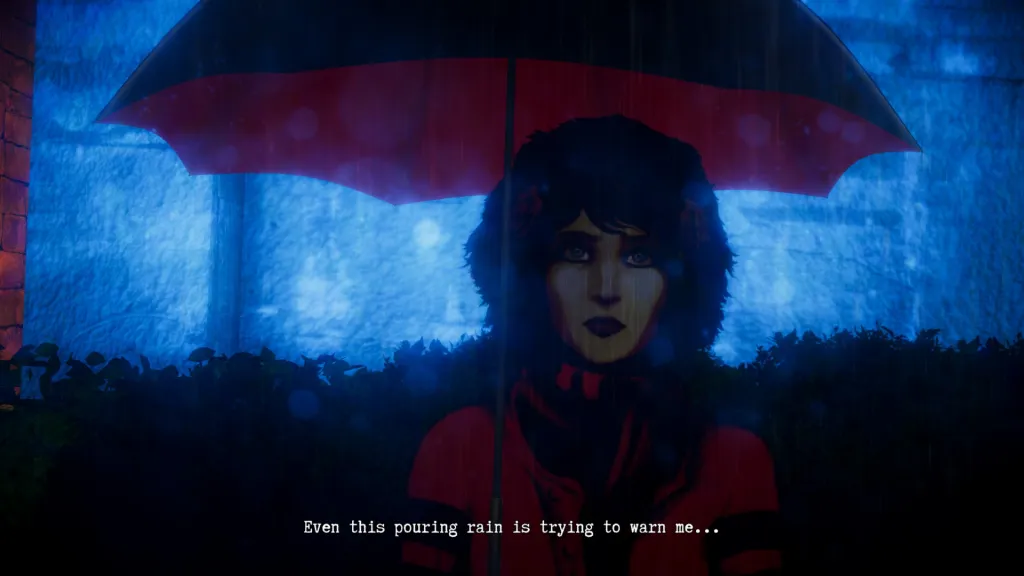
Lorelai
What is Harvester Games’ “brand” — what is your collective body of work most known for?
Harvester Games always deals with dark, heavy topics rarely — or never — touched by video games. Given the ultimate freedom in creating my stories, I like to include elements that would be considered too extreme by other studios. As it’s mostly just me here making decisions, I don’t care what is “suitable” or “appropriate” — I just go along with whatever fascinates me at the time. It’s usually something that has personally touched me at some point in my life, something I have dealt with either personally or by witnessing people close to me go through it. I dress it in a bunch of metaphors and move things around until it’s all beautifully weird and creepy. For me, it’s like cleansing myself from all this bad stuff sitting inside my head, removing it like a poison, or like one would at a therapist’s couch. Except my therapists are players witnessing these games — with lights out and headphones on, it would be hard to find a more intimate setup for diving into these extremely personal stories. I think they appreciate the honesty and find they can relate because they’ve also gone through some of these experiences themselves at some point in their life.
People always associate my little indie studio with The Cat Lady — ultimately my most successful and recognizable game, which has forever carved its place in the gaming landscape. This is Harvester Games at its purest: there’s a strong theme of mental illness (depression in this case), there’s a relatable female lead, a beautiful and real friendship as a redeeming force, and there are of course serial killers, over-the-top gore, and tons of WTF moments, which all make for a somewhat unique mix. These elements are also present — and expanded upon — in all my later games. In Downfall, I explore eating disorders and schizophrenia, in Lorelai, alcoholism and dysfunctional families, and in Burnhouse Lane, drug addictions, cancer, and old age illnesses.
My brand is the illness of the mind — the kind that touches most of us in one form or another, and we would prefer to keep it hidden because we feel equally afraid and ashamed of it.
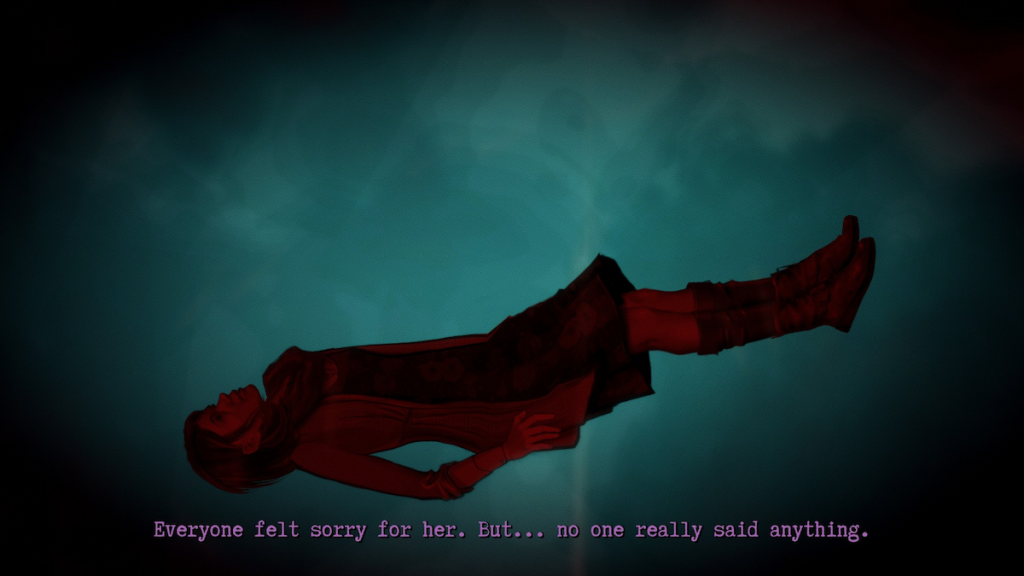
Burnhouse Lane
From an artistic standpoint, what draws you to the horror genre? What about from a consumer perspective (i.e., why do you like to read/watch/play horror media in particular)?
I chose horror to be my “thing” very early in life. I was that ’80s kid who got to watch A Nightmare on Elm Street, Halloween, and Dawn of the Dead way before I was the appropriate age for it — and I’m so grateful to my parents that they let me! Sure, I was the kind of boy who drew extra blood in their comic books with a red marker… but I didn’t grow up to be some kind of deranged psychopath because of it. On the contrary — I’m a 41-year-old husband and a dad of two, perfectly harmless — despite spilling literal buckets of blood in video games over the years both as a developer and a gamer.
I wouldn’t say horror was an artistic choice — it was the only choice. As soon as I fell in love with Stephen King’s books as a teenager, I knew one day I would follow that same path. It was just a matter of time. To me, deep stories without exciting moments that make your heart beat faster, keeping you on the edge of your seat, wouldn’t be as interesting to tell. I’m not in the business of making games to preach my truths — I’m here to entertain. Good stories are important and so rare in video games, but for me, it’s all about the full package — all these elements have to work together to create a fun, one-of-a-kind game that’s worth your time, so when you finish it, you feel satisfied and not moralized. Most of all, you feel like you’ve been on a trip to hell and back, that you’ve just gone through an adventure that was both emotional and nerve-wracking, and you came back alive.
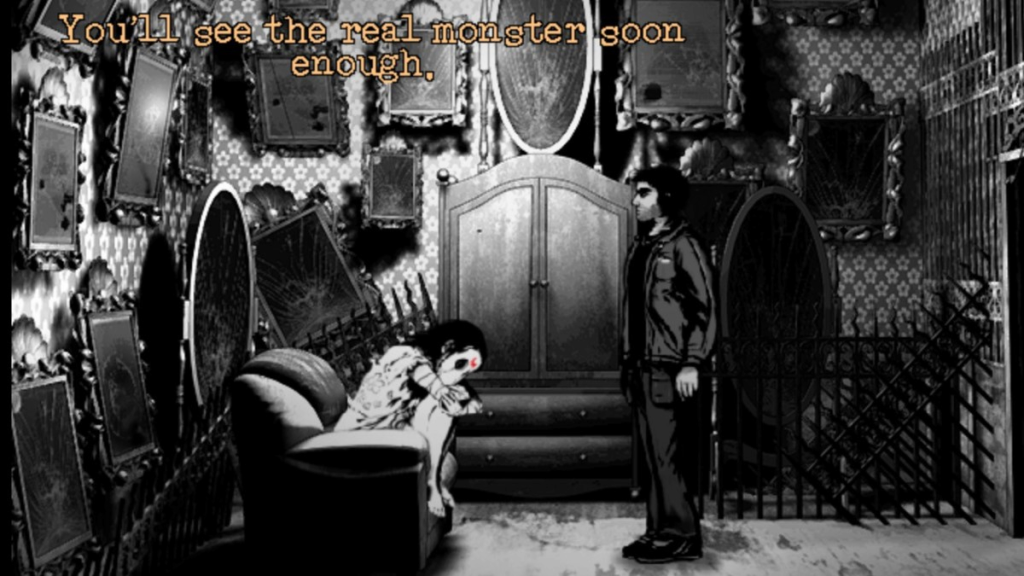
Downfall
In the past, you’ve stated that you hope The Cat Lady and Burnhouse Lane will make people laugh and cry, which are not exactly common reactions for horror media to elicit. Why do you consider it important to infuse your games with both heavy emotion and humorous moments?
I think the lack of humor is what often puts people off when they think about horror. It feels sometimes like all the real horror stories are so unbearably heavy and dark and they will just make you feel exhausted… And sure, there’s definitely room for this kind of game out there — they put players in a certain state of mind that some people actually really enjoy — me included, on occasion! But in my games, I like to add little splashes of humor to ensure players aren’t just bombarded by a constant dread all the time.
These moments of relief are extremely important because they make the horror scarier by taking us away from it every now and then, making us feel safe for a moment. That’s when we bond with the characters who suddenly appear more human as we see them in lighter, more ordinary everyday situations. When people are talking to each other, they often make little jokes, and their responses indicate that they’ve hit that level of chemistry required to form friendships. That’s how we start caring about them — because we’ve seen them react to both dangerous, life-threatening situations and ordinary, chill moments.
Once we care about them, to see these characters lose or get hurt in some way will be that much more meaningful. It will evoke emotions — and that’s my goal here. To make players feel something real. I’ve seen people actually cry because one of the NPCs in my games has died and it made them really upset, and this might sound a little weird but… to me, that was the best feeling in the world. Not because they were sad — it was because I made them care enough about a fictional character that they treated them almost as if they actually existed.
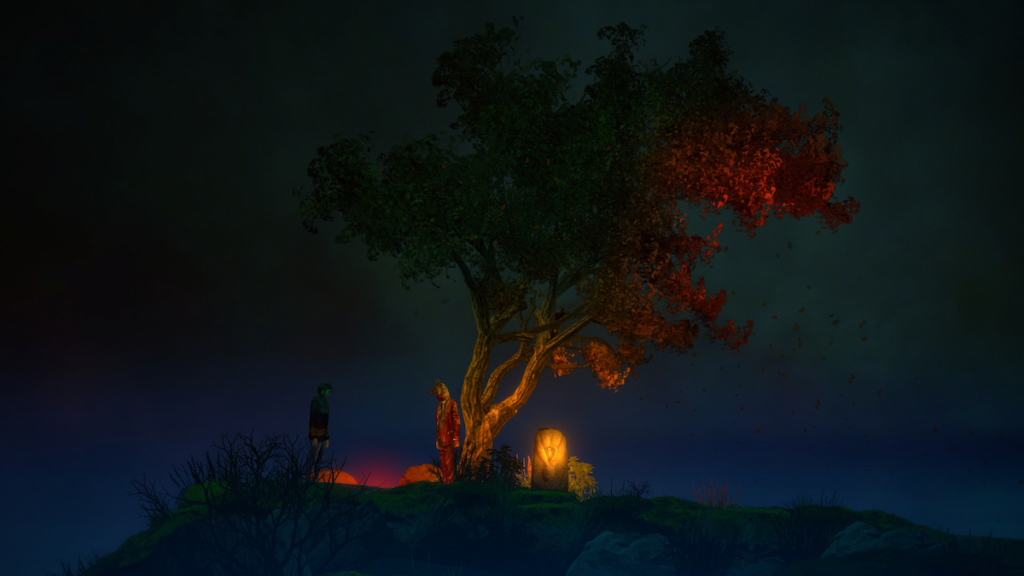
Burnhouse Lane
How do you balance using certain subjects (e.g., suicidal ideation) as a vehicle for horror/shock value and knowing that these are potentially deeply personal issues for some of your audience?
I try to treat these difficult subjects with the respect they deserve, as I would in a conversation or any other situation. I feel deeply sorry for anyone who has experienced any of these issues, and I never make fun of them or downplay their importance — I simply acknowledge that they’re a part of life.
Having said that, I hate it that it’s so easy to offend people nowadays. Part of being a storyteller is that sometimes you have to present fictional characters’ views and opinions, and they’re not always the same as yours. For example, in one of my games, there’s a guy mocking his wife as she hangs herself in a bathroom. The things he says to her are extremely offensive — he is a drunk, evil man who doesn’t care about the convenances. It should go without saying that his views are not mine. And yet, in today’s world, writers often get accused of being insensitive, racist, sexist, etc.
This particular scene hasn’t actually received any such negative feedback. The only one I’ve had so far is the treatment of obesity in my games — using the word “fat” or making fun of bigger people, which is ironic in a way because I’ve been battling my own weight my entire life, and again, these are just fictional characters saying fictional words. It would be better if people could stop taking things so personally. The obese character of Destiny in Burnhouse Lane is there to represent a desire for consumption and later the loss of it when we get ill and face our death. It’s definitely not there to poke fun at “fat people”!
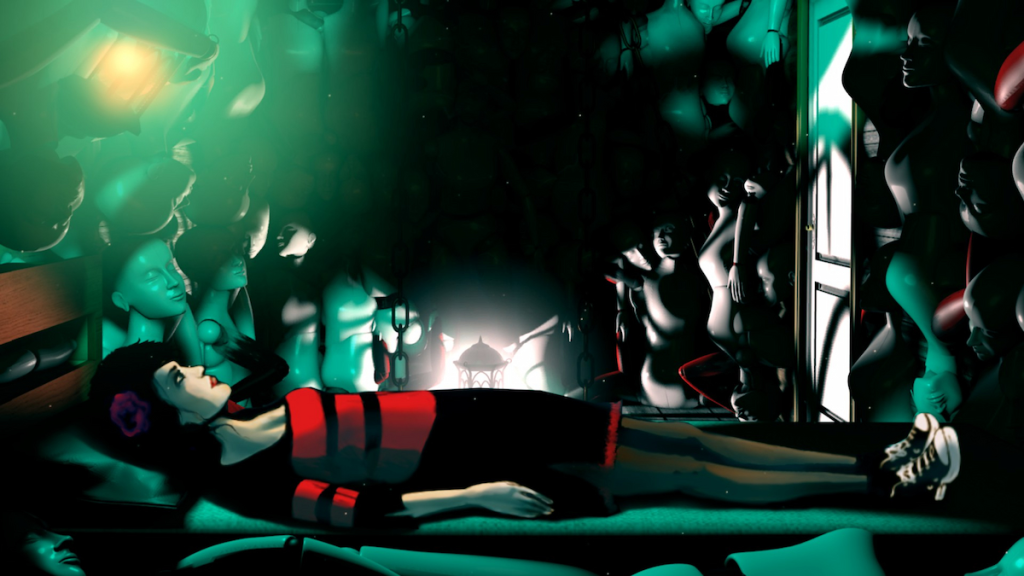
Lorelai
Mental illness (especially depression) is among your work’s most common themes. What sort of impression do you hope to make with these depictions?
I hope I can help people come to terms with these issues. I didn’t know much about depression until my wife got diagnosed with it, and it was scary and weird and a real eye-opener. I poured my own secondhand experience of that into The Cat Lady, unsure what people would think of it, and it turned out to be something everyone was waiting for (that was before depression became “cool”…). It was a hard time in my life. While not suffering from the illness myself, it’s still destructive and extremely difficult to see your partner go through it and being unable to help. That’s why I decided to give the game an ending that would be both realistic and filled with hope — to make myself believe that we can beat that thing and things will get better. Because without hope… there’s no chance of ever changing anything.
Later, I received a lot of emails from players who claimed the game actually helped them — that it was therapeutic and lifechanging and that they return to it every year or whenever they feel down because it helps them battle their own depression. To me, that was more than I could ever ask for. And to my surprise, these emails and messages keep coming even now, more than 10 years after The Cat Lady’s release.
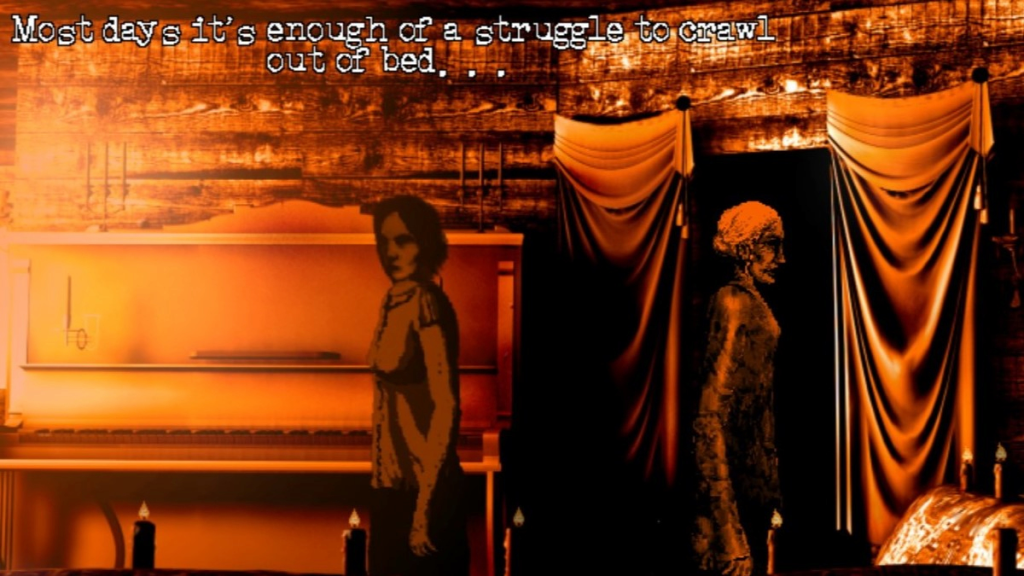
The Cat Lady
Burnhouse Lane deals with the topic of physical sickness to a greater extent than your previous games, and the decision to tie Angie’s illness (lung cancer) to an addiction (smoking) feels very deliberate. What made you decide to put her ongoing relationship with cigarettes at the forefront of the game’s narrative?
Cancer just showed its ugly head in my life recently when my dad got diagnosed with it (he seems to be winning that battle, though!), so the theme kinda came from there. The smoking addiction, on the other hand, is all mine. I was a dirty smoker for many years, and I will shamefully admit: I loved every second of it. The way cigarettes felt in my hand, that magical sensation that came with the first puff of smoke… When you smoke a cigarette, the cigarette smokes you, slowly taking away minutes of your life. You are mutually destroying yourselves. I quit about nine years ago, and it was the hardest thing I’ve ever done. I still miss it, but I think I can finally consider myself cured.
Since I always say it’s best to use your own experiences in storytelling, I thought it was time to put smoking in the spotlight, especially since it was a perfect explanation for Angie’s cancer. Plus — come on, that saving mechanic, which only allows you to save the game by smoking at an ashtray — is kinda awesome! Sure, it might be a little annoying… but so is being a smoker — always counting how many cigarettes you have left, always thinking about a chance to smoke another one…
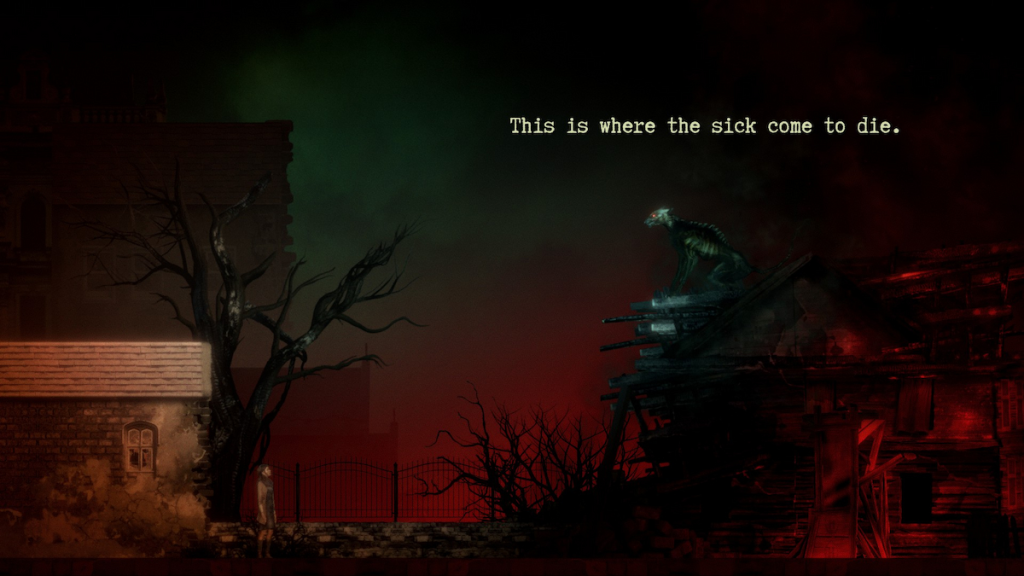
Burnhouse Lane
In the problematic relationships your games portray (e.g., Joe and Ivy or Susan and Eric), do you intend for players to sympathize with both parties to a certain extent? Do you see any of these characters as beyond redemption?
No one is ever beyond redemption. Sometimes people simply run out of time to reach it… The thing with couples fighting is that they’re usually both right and both wrong — the truth never lies entirely on one side. We’ve all been there, furiously arguing about something we were wrong about — often with good intentions but blinded by strong emotions that got out of hand.
In my games, I show broken relationships because the world is full of broken people. We hide these imperfections, pretending we’re fine, but in reality, we know we’re full of flaws. As a writer, I try to reflect that in my characters, and I try to leave the judgement to the player — I don’t take any sides, but I’ve always believed we should love people not despite their flaws but because of them, and this message has been present in every game I’ve ever made.
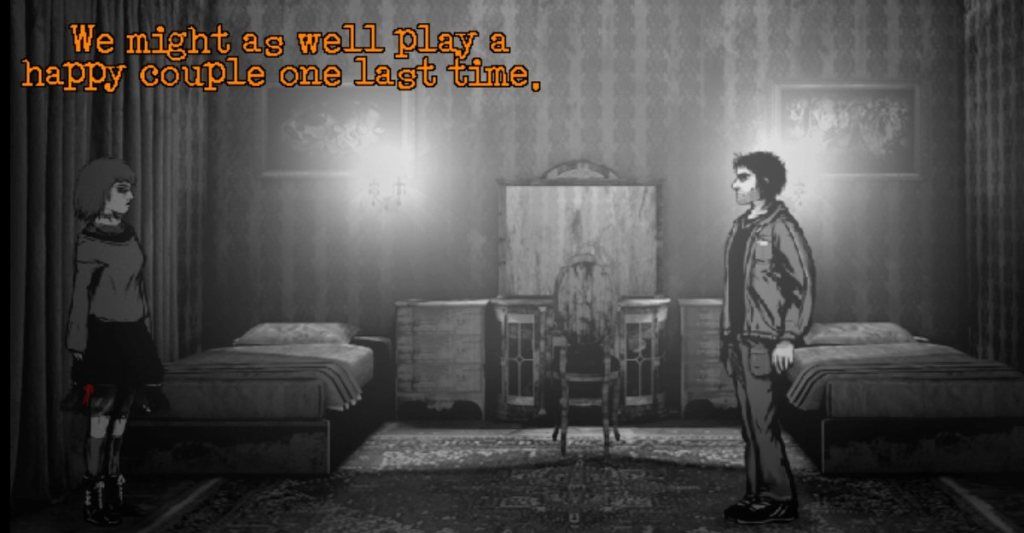
Downfall
One of Burnhouse Lane’s villains is a deranged priest who exemplifies the monstrous acts people commit using religion or tradition as pretext. What was the idea behind including this character?
Yeah, that particular guy is hard to love… He’s annoying to start with and ends up being absolutely unbearable with no redeeming qualities, contrary to what I’ve said earlier about making three-dimensional characters. The only aspect of him that I like is personal — he’s voiced by a really wonderful guy (Ellis Knight) who has shown me and the game lots of support and really gave his best to the role.
I guess my thinking behind “the evil priest” was to make a personal stab at the Catholic Church. I grew up a Catholic myself, but like many (in my country at least), I have walked away from that institution let down by its actions. So, in a way, this was my own “Sinead O’Connor tearing up a picture of the pope” act, only on a much smaller scale. For many years now, I have been just a guy who believes in God but hates the church as an organization. And no, I don’t believe all priests keep young women in sex dungeons as prisoners to slowly torture them until they’re dead… but I’m sure it’s possible that some do!
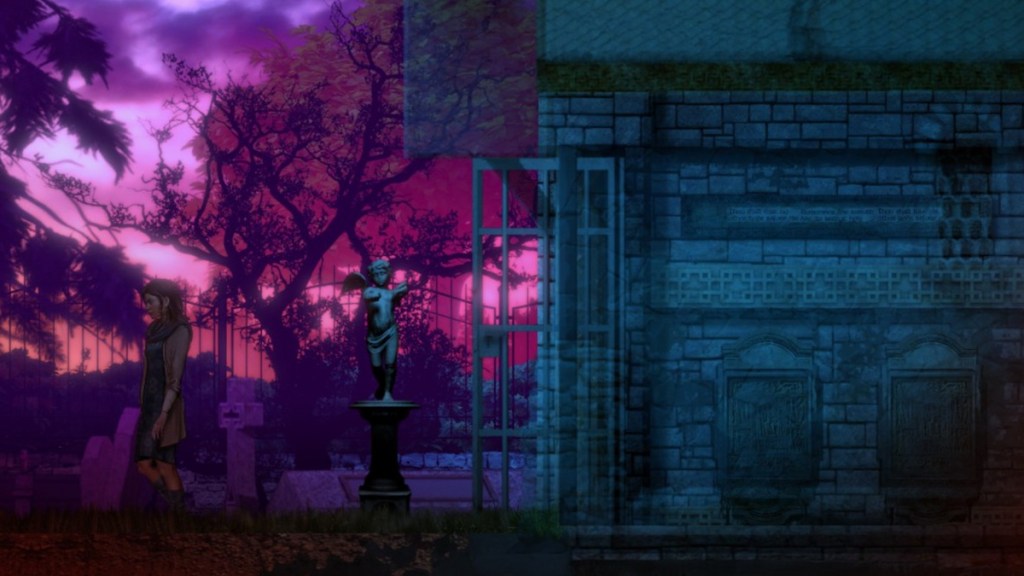
Burnhouse Lane
Despite the overall gruesome, terrifying, and somber atmospheres in your games, there are also plenty of life-affirming moments and even the potential for players to reach some hopeful — if not fully “happy” — endings. Do you find these more heartening scenes difficult to conceive in the midst of the horrifying stories you’ve created, or do they tend to happen naturally?
The thing is, people tend to imagine horror authors as these very dark, troubled, twisted individuals who only create their art during moonless nights, sipping blood… The reality though, is quite different. I’m a nice guy! I can be a little shy sometimes, but I do love talking to people, and I still have faith in the human race, and I believe things will be okay in the end. Like Rick Grimes, I’m totally a “my mercy prevails over my wrath” kind of guy.
Yes, the dark side of human nature fascinates me. I like to explore it, to delve deep into that cesspool of crime and deviation and nightmares… but always with the intention of bringing hope. In my world, the good always wins — even if it’s not always in the obvious way. I root for my characters — I get so emotionally invested during the course of making the game that I really want them to succeed. I’d say I only ever put them through hell to see them come out stronger in the end. These secret “golden endings” are my personal favorite part because a success you haven’t fought hard to achieve isn’t really a success at all.
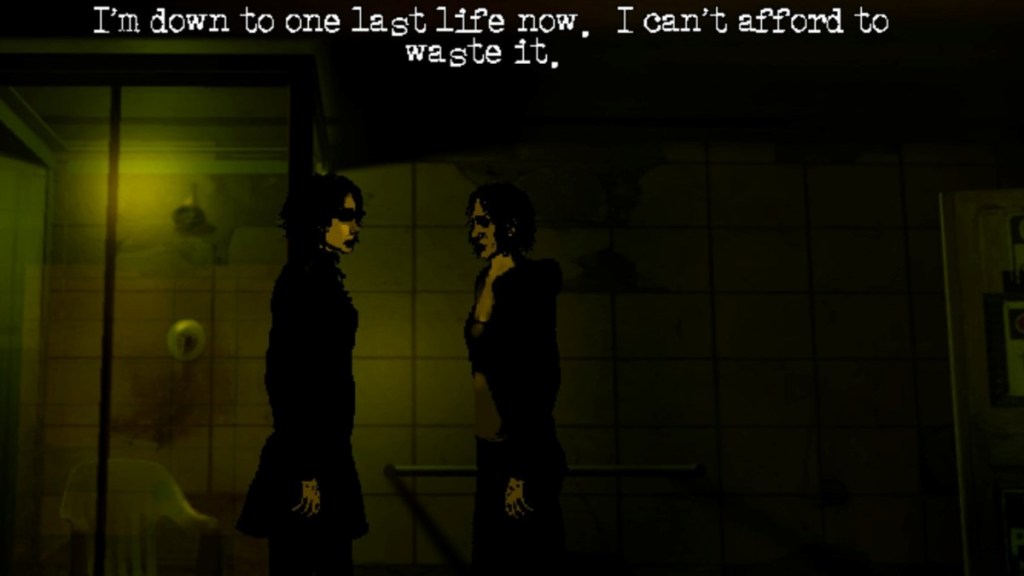
The Cat Lady
Is there anything you can tell us about the game you’re currently working on?
I’m not ready to reveal it yet, but I can say one thing: it involves plenty of trains. I love trains.
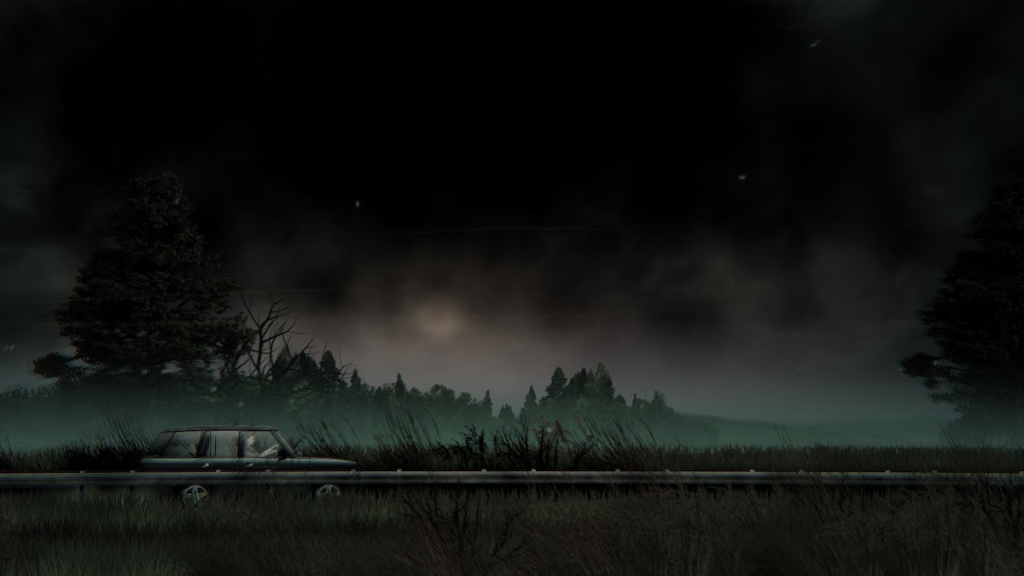
Burnhouse Lane
Burnhouse Lane, Harvester Games’ latest title, is currently available on PC, PlayStation 4, PlayStation 5, Xbox Series S|X, and Nintendo Switch. Downfall, The Cat Lady, and Lorelai (the Devil Came Through Here trilogy) are available on PC via Steam and GOG.

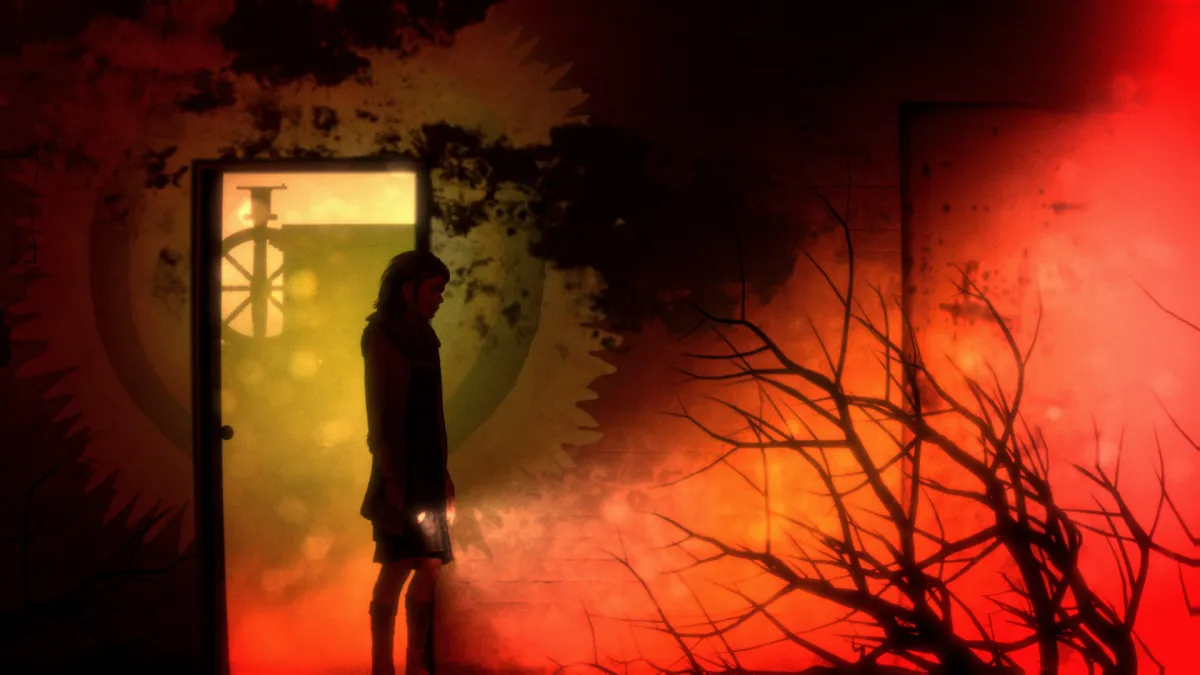
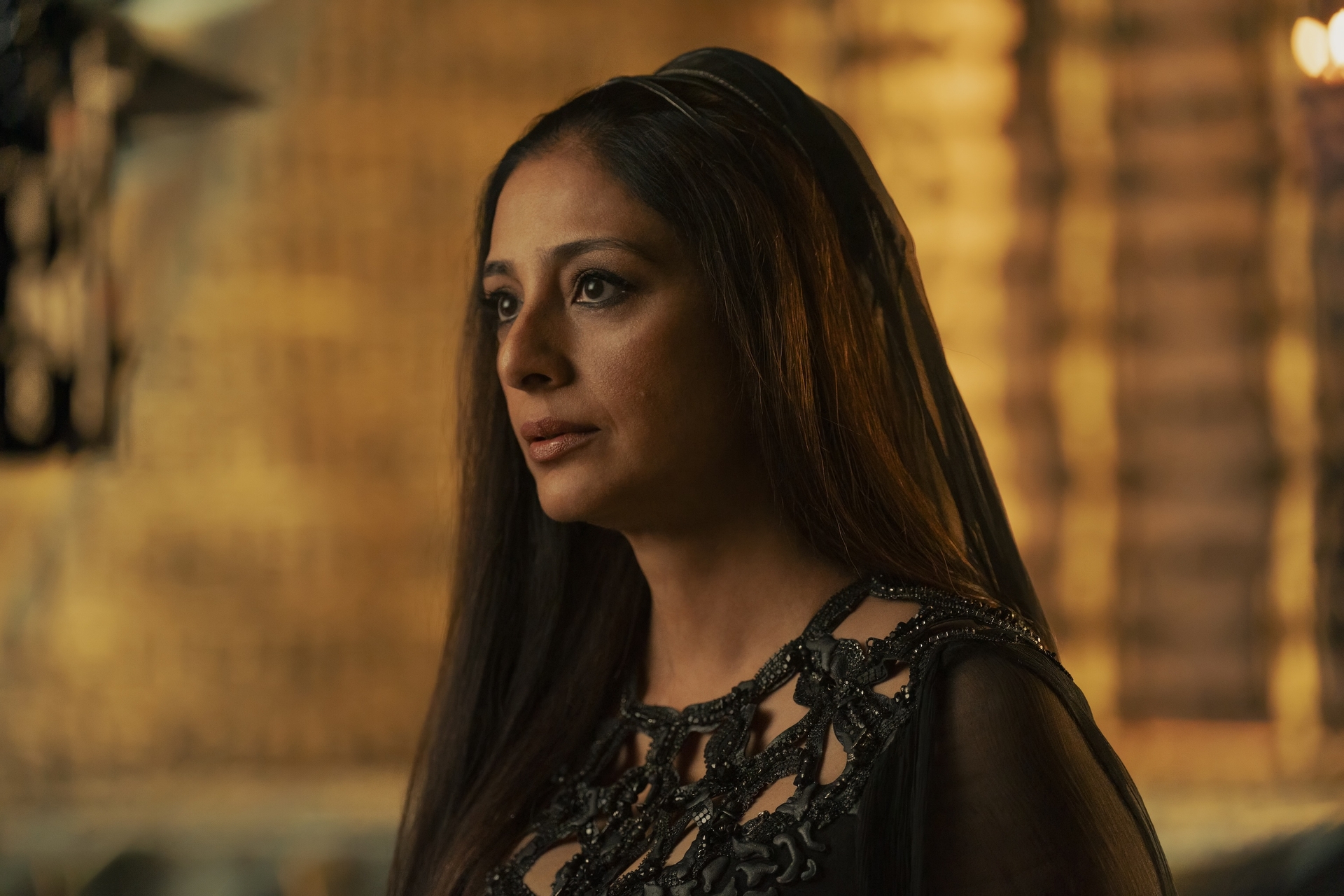
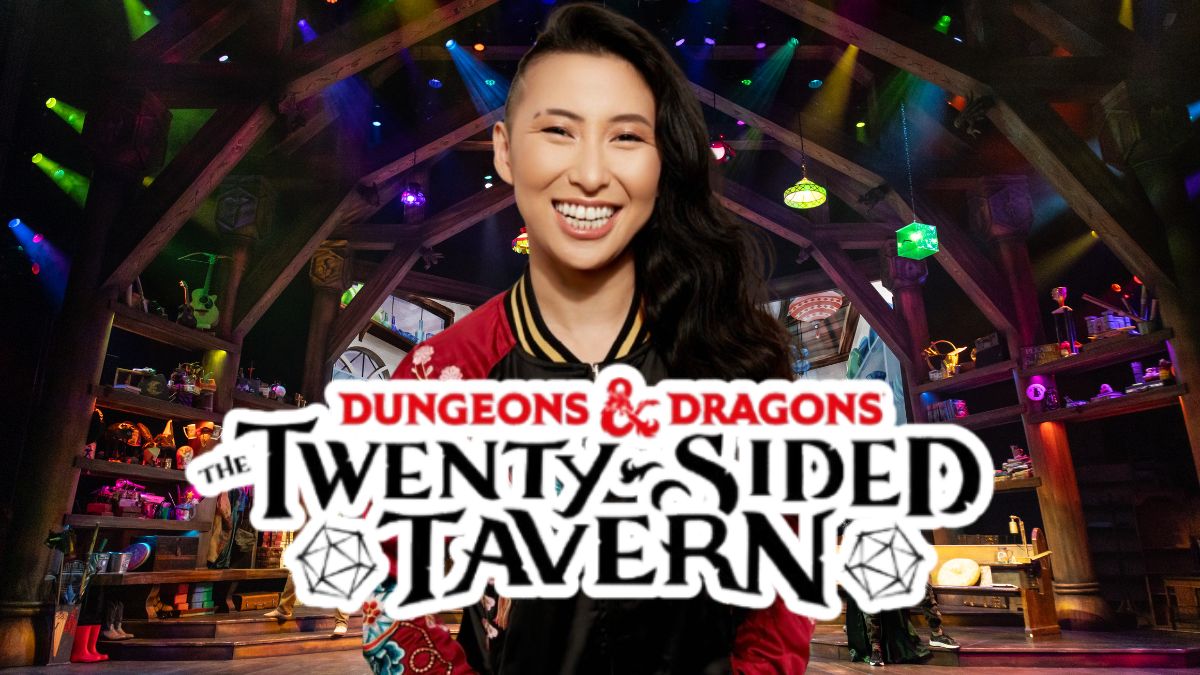
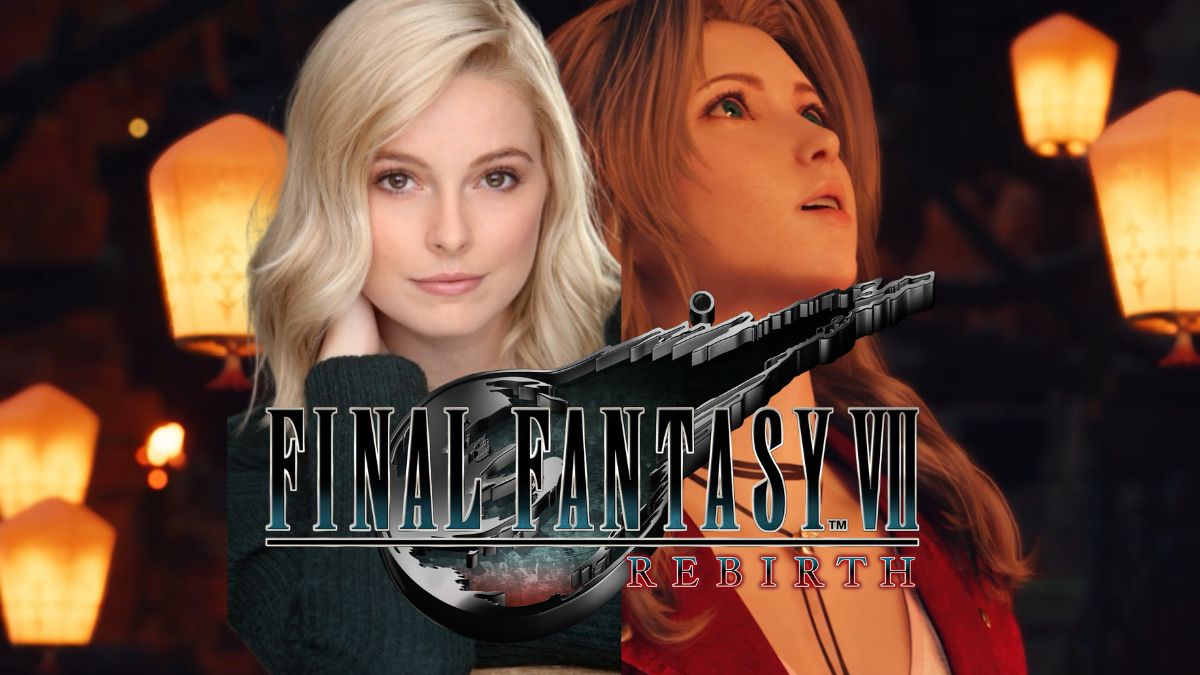

Published: Aug 28, 2023 10:00 am